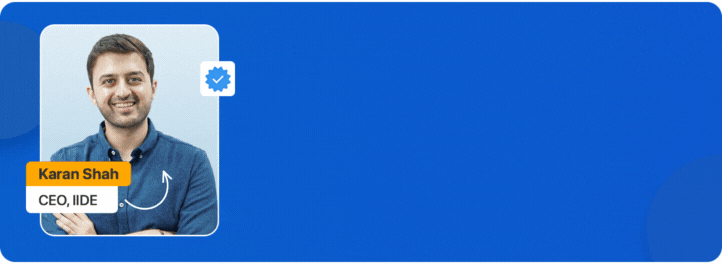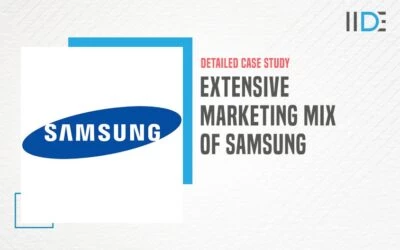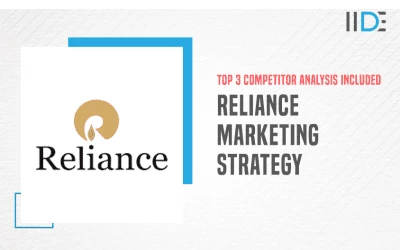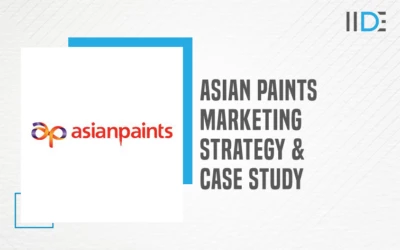Previously we saw the SWOT analysis of Bajaj Finserv, today let’s learn about the SWOT analysis of MasterCard.
MasterCard, originally known as Interbank from 1966 to 1969 and Master Charge from 1969 to 1979, pays created by the combination of several bank card associations in response to BankAmericard issued by Bank of America which later became is a Visa credit card issued by Visa Inc.
The organization was formed because a group of 17 bankers used it to receive duplicates of their credit cards. Therefore, the ICA was not controlled by a single bank.
Between InterBank and MasterCard, the InterBank card was named MasterCharge in 1968.
The company has gained popularity due to its strong marketing strategies, it can further use digital marketing for gaining more customers. Digital Marketing is the new trend in the marketing field, if you want to learn more about digital marketing do check out Free Digital Marketing Masterclass by Karan Shah the founder and CEO of IIDE.
We’ll first get to know about MasterCard before diving into the SWOT Analysis of Mastercard.
About MasterCard
MasterCard is a market leader in the financial service industry, providing efficient services with multiple features. With its simple and impressive colors, it is easily recognizable and also very easy to remember.

MasterCard emerged in the late 1940s when some U.S. banks were pulling out and handing out paperwork to customers who served as cash at local stores. It was officially launched in 1966 under the name of the InterBank Card Association (ICA).
The organization was formed because a group of 17 bankers used it to receive duplicates of their credit cards. Therefore, the ICA was not controlled by a single bank between InterBank and MasterCard, the InterBank card was named MasterCharge in 1968.
| Founder | Wells Fargo, Crocker National Bank, First Interstate Bancorp, Bank of California |
|---|---|
| Year Founded | 1966 |
| Origin | New York, USA |
| No. of Employees | 21000 (2020) |
| Company Type | Public |
| Market Cap | US $ 352 Billion (2021) |
| Annual Revenue | US $ 15.3 Billion (2020) |
| Net Income/ Profit | US $ 6.41 Billion (2020) |
Services Provided by MasterCard:
There are multiple services provided by MasterCard.
- Debit Services
- Prepaid Services
- Brand Agnostic Service
Competitors of MasterCard:
MasterCard faces intense competition from other players around the world. Some of its major competitors are listed below.
- Visa
- Global Payments
- PayPal
- American Express
- Elavon
Now that we know about MasterCard let’s have look at its SWOT Analysis.
SWOT Analysis of MasterCard

The SWOT Analysis Framework enables an organization to identify internal strategic features such as strengths and weaknesses, and external strategic factors such as opportunities and threats.
1. Strengths of MasterCard
As one of the leading organizations in its industry, MasterCard has many capabilities that help it grow well in the market. These strengths not only help to protect the market share in existing markets but also help to enter new markets.
- Wide Presence – Mastercard works in more than 210 countries around the world working in 150 currencies and 53 languages, with 2.2 billion users and 36.5 million locations worldwide. So, hence it has a wide presence.
- Safe and Secure – The company has been a runner when it comes to safety and security. Despite the testing of Mastercard, a set of technical solutions that verify consumer biometric identity, Decision Intelligence – a set of security solutions that use machine learning to obtain information on real-time transactions to improve acceptance and reduce false positives, in migration to EMV ( International standard for chip technology).
- Strong Product Portfolio – Over the years MasterCard has invested in building a strong product portfolio. MasterCard’s SWOT Analysis simply confirms this fact. This product portfolio can be very useful if an organization wants to expand into new product categories.

2. Weaknesses of MasterCard
Weaknesses are areas where MasterCard can improve. Strategic decision-making and weaknesses are areas where the firm can improve using SWOT analysis and build on its competitive advantage and strategic position.
- Four-Party System – Mastercard operates through a four-company payment network. But other companies such as American Express, Discover, and other payment methods operate on an external company system where there is direct corporate communication between both merchants and customers. Three-party payment systems help to have more control over buyers and sellers than four-party payment systems.
- High Level of Recruitment – Compared with other organizations in the industry. MasterCard has a high level of recruitment and you have to spend a lot more to compete with competitors in training and developing its employees.
- Improper Financial Planning – Financial planning is not done properly and efficiently. The current level of assets and prices of liquid assets suggests that the company can spend more money than it currently does.
- Newsletters – As the financial industry is heavily regulated around the world and many cases of public litigation cases and regulatory procedures and investigations conducted by intermediate institutions affect the business and operations of Mastercard.
3. Opportunities of MasterCard
Opportunities are the external factors that give an organization a competitive advantage. Opportunities are external factors of the organization. We need to focus on the company’s efforts to improve results.
- Emerging Markets – Developing nations will continue to be a growing economy for digital payments and transactions. According to the 2017 global tax report, significant growth in digital payments is driven by emerging Asian countries.
- Collaboration with Fin-tech Firms – Although fin-tech firms are a major threat to Mastercard due to the emergence of Fin-tech firms, Mastercard can work in partnership with these companies to regulate the relevant market.
- Non- Revenue Transaction – The prices of non-cash transactions are increasing due to the adoption of alternative payment/delivery systems (ADC), rising financial literacy, and the Government’s digital payment system, improved payment infrastructure are some of the factors that can contribute to the company’s growth.
- Lower Inflation Rate – The low inflation rate brings more stability to the market, enables credit at a lower interest rate to the customers of MasterCard.
4. Threats of MasterCard
Threats are hampering the company’s growth. Threats are the external factors of the organization. It negatively affects the business from the outside. Let’s take a look at some of the threats to Mastercard.
- The Emergence of Fin-tech Firms – Fin-tech firms play an important role in building the economy in the digital payment and transaction industry. These are new entrants who are developing other payment methods such as e-commerce payment systems, wallets, an online mobile device payment system and due to lower costs are more profitable than a company like Mastercard.
- Industrial Competition – The global payment industry is highly competitive, international payments Visa, American Express, Union pay, Rupay, Paypal, and many others offer direct competition to Mastercard which has resulted in market share losses and declining ends.
- Competing Provincial Capabilitiem –Competition and operational competitions in specific areas and regions such as Visa in the United States and Europe, Rupay in India, etc. creating challenges in the Mastercard growth line.
- Government Regulations – Regulation audits, changing government regulations in the digital payment industry, and strengthening the payment system are the main factors affecting the industry.
- Cyber Attacks and Hacking – Cyber attacks and data breaches in financial institutions are very common and cyber hackers find it easy to get sensitive customer information which makes customers shy away from looking for digital platforms especially in the emerging economy where customers are less aware of international consumer advanced.
Conclusion
Mastercard is a technology company, operating in the global payment industry. The company is doing quite well with its wide presence and strong brand portfolio. It has gained the trust of customers with its safe and secured system which has expanded ways for the company to enter new markets. It needs to work on its four-party system and improve its financial planning for a proper structure and functioning.
The company has tough competition in the financial industry so its needs to grab its opportunities and decrease its threats to get a competitive advantage.
The company can use digital marketing strategies to increase its presence in new markets. If you also want to learn digital marketing and its different attributes, IIDE is the solution for you. It has top-notch courses in digital marketing of different durations.
Liked the blog? Do check out the Knowledge Portal of IIDE for more insightful blogs on different companies.
Thank you for reading the blog. Do share your thoughts in the comments section below.







0 Comments